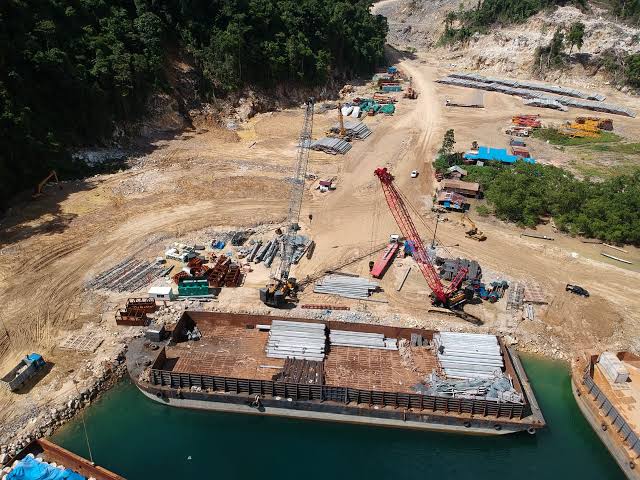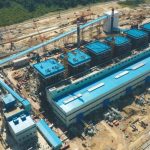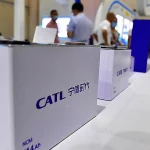Hello loyal readers of Liga Asuransi! Especially for those of you who are from Chinese multinational companies currently undertaking infrastructure projects in Indonesia—this article is especially for you. Amidst Indonesia’s booming infrastructure growth, the presence of Chinese companies is a crucial driver in various strategic national projects. However, as investment increases, so do the risks.
Therefore, it’s important for you to understand the types of risks that can arise and how to protect your investments. One of the most effective strategies is through project insurance, especially with the support of insurance broker-experienced professionals who understand local conditions and the needs of foreign companies. Let’s discuss this in more detail.
Infrastructure Investment Trends by Chinese Companies
Chinese investment in Indonesia continues to increase, particularly in the infrastructure sector. According to data from the Investment Coordinating Board (BKPM), China is among the top three countries investing in Indonesia. Chinese companies are actively participating in various major projects, such as the Jakarta-Bandung High-Speed Railway (KCIC), the development of the Morowali and Weda Bay industrial areas, a coal-fired power plant (PLTU), and an international port project.
This trend aligns with the global Belt and Road Initiative (BRI), with Indonesia becoming a key hub in Southeast Asia’s trade and logistics routes. However, this expansion faces unique local challenges: extreme tropical weather, complex soil conditions, and differing regulations and work cultures. All of these pose real risks that require careful consideration.
Risk Profile of Infrastructure Projects in Indonesia
-
Technical and Construction Risks
Large-scale infrastructure projects involve numerous parties, hundreds of workers, and heavy equipment. Technical risks include structural failure due to design or calculation errors, work-related accidents, material damage due to poor handling, and delays in the delivery of construction materials. All of these can lead to project delays and significant additional costs.
-
Natural Risks
Indonesia is a country prone to natural disasters. Floods, earthquakes, landslides, and forest fires are frequent threats. For projects located in disaster-prone areas, such as Sumatra, Sulawesi, and Kalimantan, this risk is even greater. The impact is not only physical damage to assets but also on the overall sustainability of the project.
-
Social and Environmental Risks
Large infrastructure projects often interact directly with local communities. If communication and outreach processes are not carried out effectively, the project can be rejected by the surrounding community. Furthermore, non-compliance with environmental impact assessment (EIA) documents or violations of environmental regulations can trigger protests or lawsuits, delaying the project.
-
Legal and Regulatory Risks
Differences in legal systems between Indonesia and China can pose obstacles. Legal risks include contract disputes between contractors and subcontractors, third-party claims, or obstacles in obtaining permits. Furthermore, changes in government policy can drastically alter the course of a project.
-
Reputational and Financial Risks
Project delays, conflicts with communities, or disaster damage can tarnish a company’s reputation in the eyes of the public and local media. In some cases, this can result in financial losses, reduced investor confidence, and even potential contract termination.
Case Study: Uninsured Infrastructure Projects
Imagine a Chinese construction company building a power plant in Kalimantan. As the project reaches the equipment installation stage, a massive flood occurs, inundating the entire construction area. As a result, equipment is damaged, work is delayed for two months, and costs skyrocket.
Because the company lacked insurance, all losses—from equipment replacement and repair costs to delays—had to be borne entirely by the company itself. There was no third-party compensation and no claims mechanism to quickly recover the project.
Conversely, if the company uses Contractor’s All Risk and Business Interruption insurance, the policy can cover most of the losses. The project can resume operations more quickly, and the trust of the project owner and local government is maintained.
Can All Risks Be Prevented?
Not all risks can be prevented. However, most can be mitigated or even transferred to a third party—through a risk management mechanism.project insuranceBy having the right insurance coverage, companies can avoid major losses that threaten the sustainability of their investments.
Insurance acts as a safety net in the event of an unforeseen incident. It not only protects the physical structure but also provides legal, operational, and financial protection. It is a crucial part of a risk management strategy for cross-border infrastructure projects.
Important Insurance Policy Types for Infrastructure Projects
-
Contractor’s All Risk (CAR)
This policy provides comprehensive protection against physical damage occurring during the construction phase, including those resulting from negligence, human error, and natural hazards. It is a mandatory policy for all major construction projects.
-
Erection All Risk (EAR)
EAR is intended for industrial equipment and machinery installation projects, such as power plants and factories. It covers the risk of equipment damage during installation, testing, and commissioning.
Project risks don’t just affect the company internally. If third parties, such as surrounding communities, suffer losses due to project activities, this policy covers financial compensation. For example, if a resident’s home is damaged by drilling activities or an accident on the project’s access road.
-
Equipment All Risk
Protecting heavy equipment and project machinery from damage, theft, or accidents is crucial because heavy equipment procurement costs are high, and damage can halt a project.
-
Workmen Compensation
Projects employing hundreds of workers are at high risk of workplace accidents. This policy provides protection for workers in the event of injury, permanent disability, or even death.
-
Delay in Start-Up / Business Interruption
If a project is delayed due to an insured risk, such as a flood or earthquake, this policy covers losses resulting from the delay, such as lost revenue or contractual penalties.
Why Do Chinese Companies Need Local Insurance Brokers?
Insurance purchased directly from companies in China may not always accommodate local risks in Indonesia. Differences in geography, laws, and types of disasters require policy coverage to be tailored to local conditions.
Local insurance brokers such as L&G Insurance Broker act as a strategic liaison between Chinese companies and the Indonesian insurance industry. They will assist in:
- Identify your project’s specific risks
- Ensure that all risks are covered by the policy
- Prepare documents in accordance with OJK regulations
- Accompanying you when a claim occurs, including the assessment process and communication with the insurance company.
Common Mistakes of Foreign Investors in Project Protection
Foreign companies often assume a standard policy from their home country is sufficient. However, many claims are rejected because:
- There is no expansion of flood or earthquake
- The insured value does not correspond to the actual assets
- The documentation process does not follow OJK regulations
- There is no risk assessment of the project site.
These mistakes resulted in project delays, huge financial burdens, and even tarnished the company’s reputation in the eyes of local partners and regulators.
Project Security Steps through Insurance
- Risk Analysis
Together with brokers, companies need to identify the most probable risks, including natural, technical, and social threats. - Policy Adaptation
Each project has unique characteristics. A broker will help you choose the most suitable and cost-effective policy type and coverage value. - Site Audit
Before finalizing the policy, a site survey must be conducted to ensure all assets are registered and potential risks are properly identified. - Bilingual Documentation
Insurance policies and all supporting documents should be available in two languages—Indonesian and English (or Mandarin, if necessary)—to facilitate cross-border communication. - Fast Claims
With broker support, claims can be processed more efficiently because all documents and procedures are prepared from the outset.
Project Protection Checklist for Foreign Companies
To facilitate internal audits, here is an important checklist for foreign companies:
- Do you have an active CAR or EAR policy that matches the project duration?
- Have risk extensions such as floods, earthquakes and landslides been included?
- Is all project equipment listed in the Equipment All Risk policy?
- Is there TPL protection for residents and the environment around the project?
- Are all documents in accordance with OJK regulations and in two languages?
- Do you have a local broker as a claims representative?
If even one of the above points is not met, your project could be under serious threat.
Conclusion: Protect Your Investment Before It’s Too Late
Chinese companies play a crucial role in Indonesia’s infrastructure development. However, the sheer value of the projects and the complexity of the Indonesian working environment require a well-developed risk mitigation strategy. Project insurance is not merely a formality but a foundation for long-term success.
By involving experienced local insurance brokers, such as L&G Insurance Broker, you not only get the right policy, but also the assurance that your project will be protected from various bad scenarios.
Looking for insurance products? Don’t waste your time and contact us now
HOTLINE L&G 24 JAM: 0811-8507-773 (CALL – WHATSAPP – SMS)
Website: lngrisk.co.id
Email: oktoyar.meli@lngrisk.co.id
—















